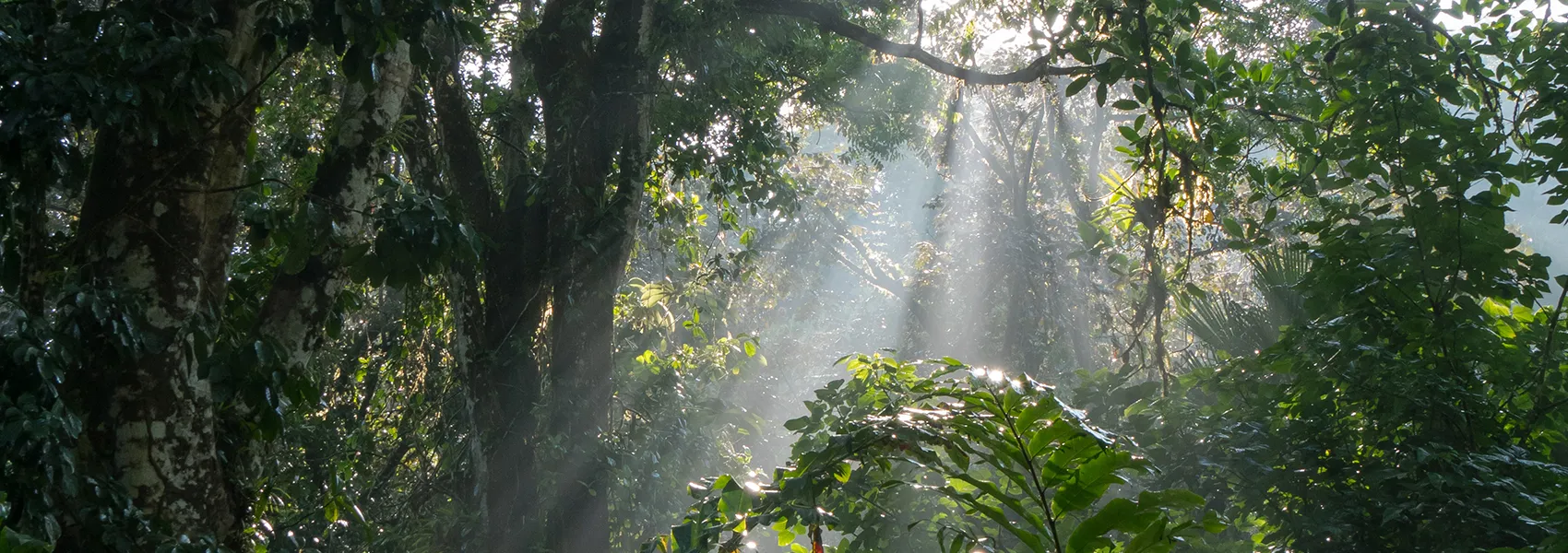
Published 28th Jun. 2021
Reading time
The poster-child for all things eco, Costa Rica is the star pupil in the world’s ecotourism class. Sandwiched between Nicaragua and Panama, this tiny Central American country prides itself on the conservation and protection of its wonderfully biodiverse environment. The country is home to half a million species and one quarter of the country’s wild lands are protected by law. Boasting 26 national parks, 58 wildlife refuges, 32 protected zones, 15 wetland areas, 11 forest reserves, and eight biological reserves – there is a lot to choose from when it comes to planning an ecotourism adventure here. Costa Rica’s main eco-points come from the sheer amount of protected zones; which promote biodiversity, as well as sustainable development practises and eco-incentives that bring economic benefits to local areas. Read on for a roundup of five of the best places in the country, that all score highly on the eco-scale, so that you can experience the best of Costa Rica’s ecotourism…
1
Dominating the fertile northern lowlands, it is impossible to talk about Costa Rica ecotourism without mentioning Arenal Volcano National Park. Explore the maze of hiking trails that zigzag through the forest at the base of the volcano, on foot or on horseback. You can wander through the protected national park using its 13 hanging bridges, while the more adventurous might want to explore the canopy by zip wire. Rafting, canyoning and mountain biking are just a few of the other activities that you can do in the surrounding area. Explore the biologically diverse rainforest, without leaving any kind of carbon footprint, knowing that visiting the park is actively helping to protect it.
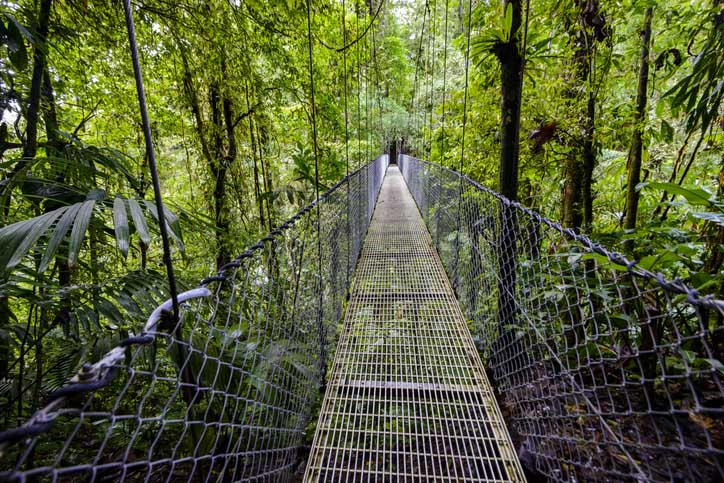
2
Considered one of the top eco-destinations in Costa Rica, Isla del Caño has to be included in this list. Only nine miles from the Pacific coast and Corcovado National Park, all two square miles of the island is a biological reserve, protecting the numerous different species that call the area home. Dive into the protected waters for world-class snorkelling and scuba diving, including superb deep freshwater experiences with large schools of jacks, barracudas, manta rays and sharks. Visitors have to sign in at the ranger station and permits are required, which limits the amount of people on the island and provides economic benefits that go towards the continued protection of the reserve. Wander the stunning beaches (the lush inland is off limits, to help protect its animals inhabitants), gazing out at the Pacific Ocean and catching glimpses of animals hiding in the trees. The bird life on the island is incredible too; keep your eyes peeled for cattle egrets, common black hawks, ospreys, brown booby and Northern phalaropes.
3
You’ll find the 43,000-hectare Corcovado National Park on the remote Osa Peninsula. The crown jewel of Costa Rica’s national park system, the park protects the largest remaining expanse of primary rainforest on the Pacific coast of Central America, taking up 40% of the Osa Peninsula and containing over 250,000 species. Home to some of the country’s best eco-lodges and eco-experiences, staying and playing here is nothing but eco-friendly. Explore the region’s different ecosystems - which include rainforests, swamps, rivers, lagoons, marshes and beaches - all the while searching for the endless amount of wildlife that live here, including more than 400 species of birds and over 100 species each of amphibians and mammals. Thanks to the park’s protected status, a plethora of endangered species - such as Baird's tapir, the white-lipped peccary, jaguars, ocelots, crocodiles, giant anteaters, scarlet macaws and the harpy eagle - have found sanctuary under its green canopy. The seas shelter three species of marine turtles and you can witness the migration of humpback whales in December and January. Go hiking, diving and snorkelling, or take a boat trip to La Llorona Waterfall. Most of the electricity in the park is solar powered and all visitors need permits to enter - when it comes to ticking eco-boxes, this park covers all of the bases.
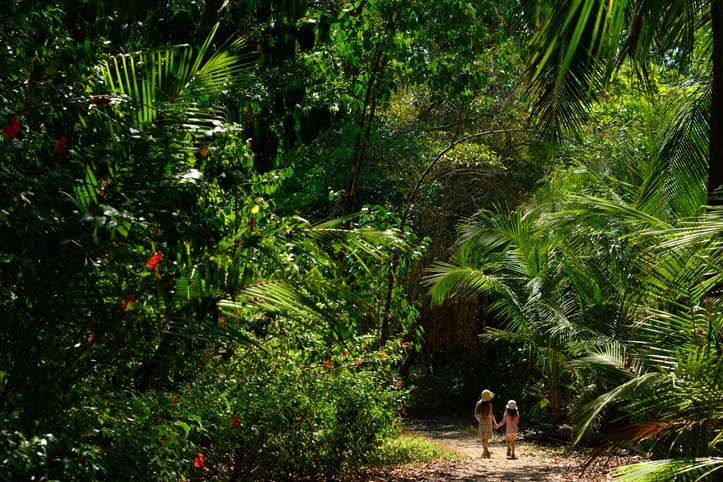
4
A model for ecotourism and sustainable development, Monteverde Cloud Forest Reserve is one of the most coveted ecotourism destinations in the whole of Costa Rica. Located in the north of Puntarenas province, this 26,000 acre biozone is brimming with a wonderfully diverse amount of wildlife and plant life. Shrouded in a misty blanket, the cloud forest is located 5,249ft above sea level and is home to an incredible two-and-a-half percent of the world’s biodiversity in eight distinct biological zones. If you are lucky, you’ll see jaguars, toucanets, pumas, monkeys and red-eyed tree frogs, plus many more. Explore the forest on foot on one of the many hiking trails that wind through the trees, or take to the canopy for a bird’s eye view on a zip-line tour or skywalk, across a series of bridges suspended in the trees. Amazing ecolodges boost to the eco-credentials of the park – adding to Costa Rica’s ecotourism score as a whole.
5
Framing Costa Rica's northern Caribbean coast, Tortuguero National Park protects one of the last large areas of tropical rainforest in Central America. Excellent lodges provide some of the best eco-friendly accommodation, while expert naturalist guides can take you out on foot or by boat to explore the waterways and thick jungle, teaching you more about the surrounding environment. Other eco-initiatives include volunteering to protect the Tortuguero beaches where huge numbers of green turtles come ashore to lay their eggs (between June and November). The protected beaches are a prime nesting ground for the endangered green turtles, which come ashore to lay their eggs between June and October. Other animals benefit from the protected status of the park too. The slow-moving tropical rivers are home to river otters and caimans, and in the trees you’ll see three different species of monkeys and birds, such as toucans and eight species of parrot.
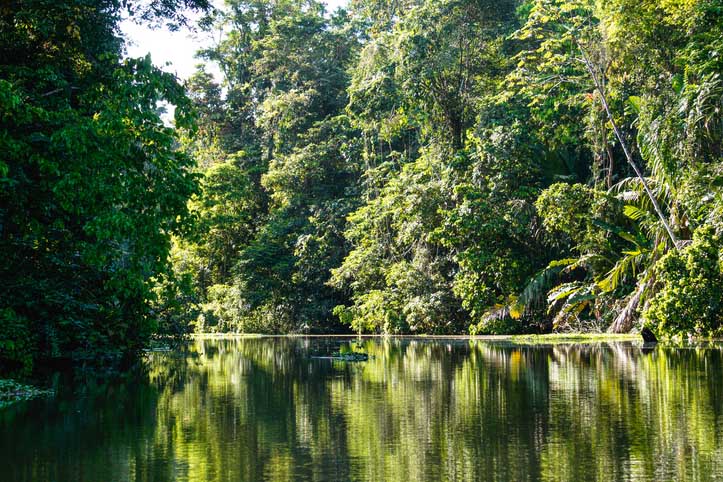
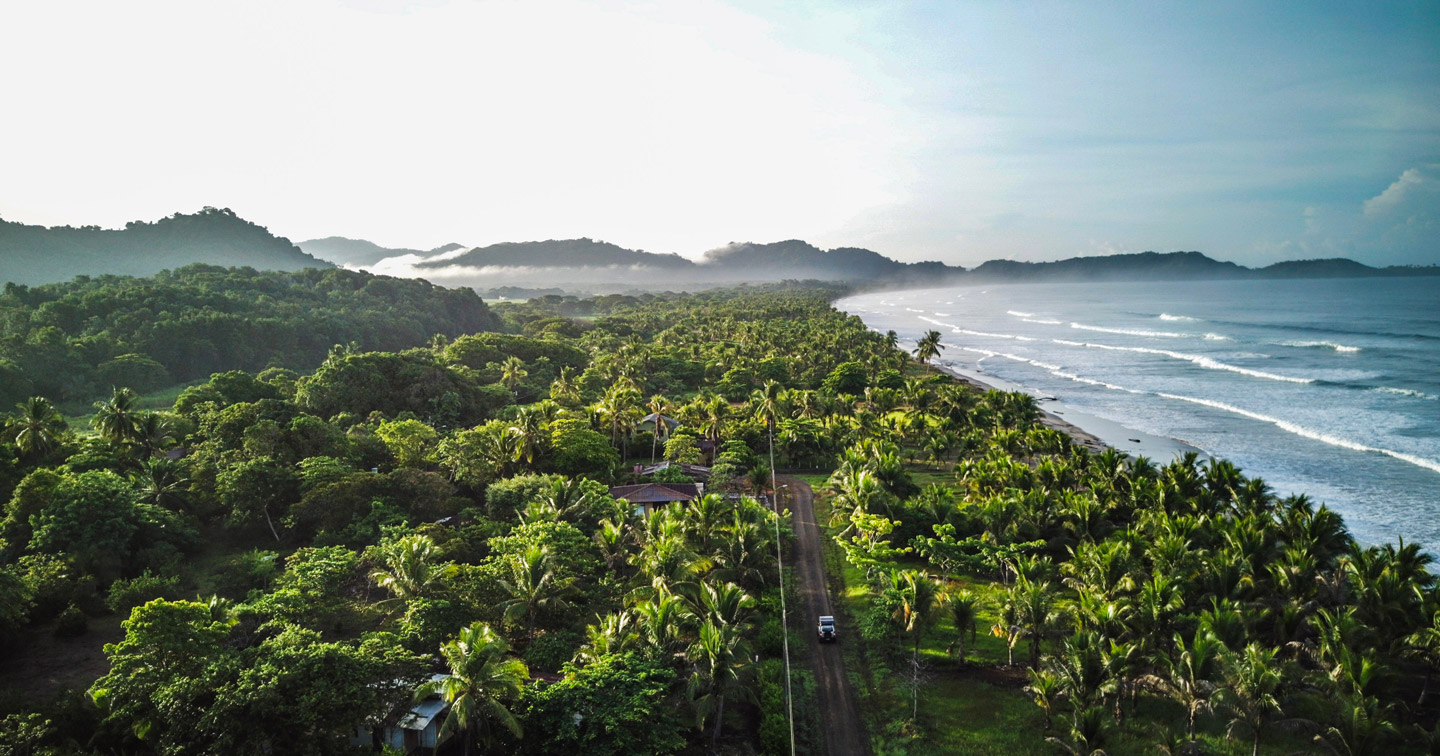
Whether you want to hit the hotspots or venture off the beaten track, our consultants will create a bespoke Costa Rica trip for you. Having scoured the country for the best properties, we offer everything from rustic lodges to luxurious hideaways. We can take you away from the crowds using our knowledge of hidden beauty spots; so instead of queuing for a waterfall in Arenal, you can enjoy a river all to yourself in Bijagua. With something for both families and couples, Costa Rica is best discovered on a self-drive trip – don't worry, you can leave the route planning to us.
ENQUIRE NOWPractical advice and inspiration for your next trip
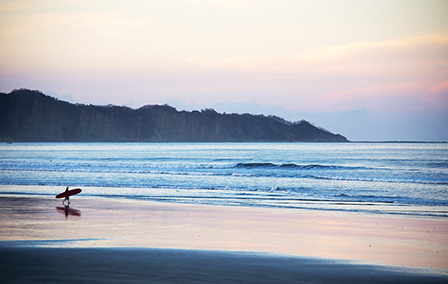
Sandwiched between Panama and Nicaragua, among deliciously verdant greenery, lies the happiest country on earth: Costa Rica. Overflowing with exotic wildlife, misty volcanic peaks and surfers’ havens, it’s no wonder this pocket-sized country has become increasingly popular with travellers. A craggy chain of towering volcanoes act as a spine, running through the country’s middle and separating the two palm-fringed coastlines that feature on many a bucket list.
1st February 2025 - Costa Rica Travel Inspiration

Pint-sized Costa Rica might be small, but it sure is mighty. Fusing thrumming cities like San Jose and Limon with outstanding nature, this pocket of paradise boasts two rugged coastlines, a strip of smouldering volcanoes and plenty of lush rainforests, jade green lakes and misty mountain peaks. It’s no wonder we struggled to pick just six of the most beautiful places in Costa Rica for this roundup. From waterfall chasing at Tenorio Volcano National Park and rafting down the Pacuare River,
21st December 2024 - Costa Rica The Natural World
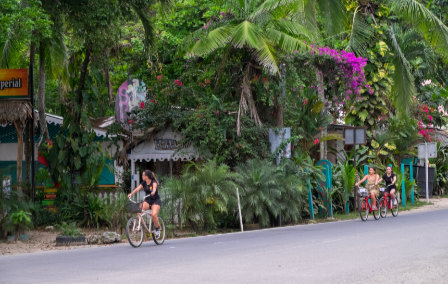
The ‘know-it-all’ of the eco class, Costa Rica is consistently listed as one of the ‘greenest’ and ‘happiest’ places on the planet. And this eco-minded attitude is summed up by their ubiquitous slogan ‘Pura Vida’, which translates to ‘pure life’ or ‘simple life’. In order to protect its resplendent landscapes and dizzying biodiversity, the country has long championed sustainable travel, through Community Based Tourism initiatives, renewable energy and environmental education.
25th October 2023 - Costa Rica Responsible Travel

Our team of destination experts will get to know you and your unique requirements for your holiday

We work with you to build an ultra-personalised holiday itinerary with your choice of accommodation, experiences and activities

All of our holidays include little extras designed to make a big difference to your trip, from fast-tracking you through airport check-in and security to our network of local Concierges